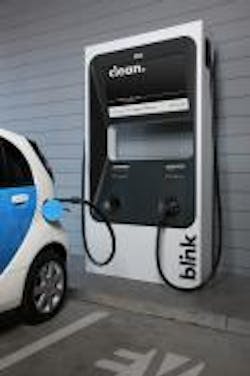“It is the financial issues that most often resonate with consumers, whether it is the higher price of the vehicle itself, the cost to fuel or charge the vehicle, or the fear of higher maintenance costs. The bottom line is that most consumers want to be green, but not if there is a significant personal cost to them.” –Mike VanNieuwkuyk, executive director of global vehicle research, J.D. Power and Associates
Here’s a shocker: when push comes to shove, cost outweighs environmental worries in the minds of most consumers when it comes time to buy a vehicle. That means most consumers will pick a vehicle with a gasoline-powered internal combustion engine over a hybrid electric, all-electric, or even diesel-powered model solely because the sticker price for the gasoline-powered option is the lowest.
The end result of these cost-concerns, according to the 2011 U.S. Green Automotive Study from J.D. Power and Associates, is that the share of hybrid and all-electric vehicles is expected to remain below 10% of the U.S. market through 2016.
The study – based on a poll of 4,000 consumers that were in the market for a new vehicle this past February – nicely sums up the conundrum facing vehicle manufacturers when it comes to selling more so-called “green” vehicles: While consumers often cite saving money on fuel as the primary benefit of owning an alternative powertrain vehicle, the reality for many is that the initial cost of these vehicles is too high – even as fuel prices in the U.S. approach record levels.
Mike VanNieuwkuyk, J.D. Power’s executive director of global vehicle research, noted that concern about the purchase price of alternative powertrain vehicles—particularly for hybrid electric vehicles—has become even more of an issue this year as, at the end of 2010, tax credits from the Energy Policy Act of 2005 got phased out.
"Hybrid electric vehicles have been available in the automotive market for more than 10 years, and consumer awareness and understanding of them has grown during that time," he noted. "As concerns about the functionality and performance of hybrid vehicles have abated, vehicle price has become more prevalent as the primary purchase impediment. Without a tax credit to offset the price premium, consumers must absorb all of this additional cost.”
Furthermore, aggressive U.S. government subsidies are unlikely to be sustainable over the long term, he explained, as the nation begins to try to reign in massive deficit spending. Thus, ultimately, the true cost of alternative powertain technology needs to come down substantially in order for consumers to purchase it.
This “sticker shock” syndrome, by the way, creates a “chicken and egg” scenario for hybrid and all-electric vehicles to a degree, for the single most costly component of either vehicle remains the batteries.
Without high sales volumes, say most experts, the cost of batteries – and the hybrid and all-electric vehicles powered by them won’t come down. But if, by extension, that component makes these vehicles too expensive in the minds of most consumers, sales won’t ever reach the required volume for lower costs.
In addition to significant price premiums for batteries, functional concerns are also more likely to limit consideration rates for all-electric powertrains. Driving range and the availability of charging sites away from home are the two concerns cited most often, J.D. Power’s poll found, with this "range anxiety" contributing to the lowest consideration levels.
Still, by the end of 2016, J.D. Power and Associates expects there to be 159 hybrid and electric vehicle models available for purchase in the U.S. market – a significant increase from only 31 hybrid and electric models in 2009.
However, VanNieuwkuyk stressed converting interest in hybrid and all-electric vehicles into actual sales for all of these models will require concerted efforts to improve the technology and infrastructure and reduce the cost to consumers. In short, he noted, automakers, along with government entities and others, face considerable work educating consumers as to the true costs and benefits of these technologies.
[Another big issue – noted in commentary from David McQueen, a regular reader of this blog, this week – is that the U.S. lacks the electrical generation capacity to support the addition of millions of electrically-powered vehicles. We’ll go into that subject in another post.]
Interestingly, J.D. Power found that most consumers view hybrids and EVs largely from a cost-saving perspective, rather than from a purely “good for the environmental” stance – with reduced expenditure on fuel the predominant benefit cited by consumers for each of the primary alternative powertrain technologies examined in the firm’s study.
Although the environmental benefits of these vehicles are recognized, they are mentioned far less frequently than saving money on fuel. For example, 75% of consumers who indicate they would consider a hybrid electric vehicle cite lower fuel costs as a main benefit, J.D. Power found. In contrast only 50% cite "better for the environment" as a main benefit of these vehicles.
"Only through promotion and education will significant numbers of U.S. consumers become sufficiently comfortable with both the financial investment and, in some cases, lifestyle changes required to make the leap from traditional vehicles to alternative powertrain vehicles," VanNieuwkuyk said.
But that might be more easily said than done.
